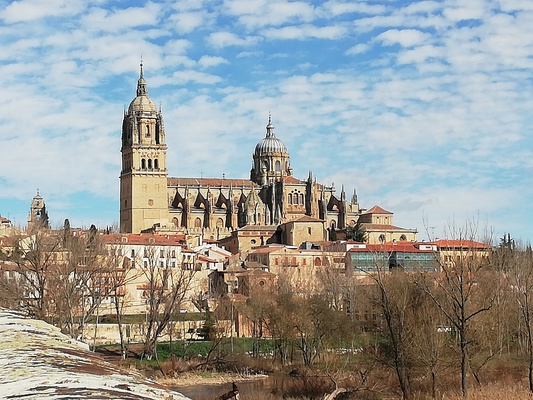The training week was attended by Urška Tavčar, Nataša Grom and Tanja Marčič. We have been hospitating the lessons and projects of teachers and students of the Salamanca Salesian School, learning about the Spanish school system and the cultural and natural heritage of the Spanish city of Salamanca and the surrounding villages.
Salesianos Pizarrales is a "house" that belongs to the Salesian province of Santiago el Mayor, one of the two areas where the Salesians of Don Bosco in Spain.
In addition to the school center, the Salesianos Pizarrales Youth Center has an educational environment in which more than 250 young people live and learn together on various activities from Monday to Saturday.
A name Salesianos Pizarrales has always been associated with vocational training in Salamanca, bringing together 24 units between basic vocational training, intermediate and advanced levels, about five professional families: Administration and Management, Commerce and Marketing, Electricity and Electronics, Computer and Communications, and Transport and Maintenance of vehicles.
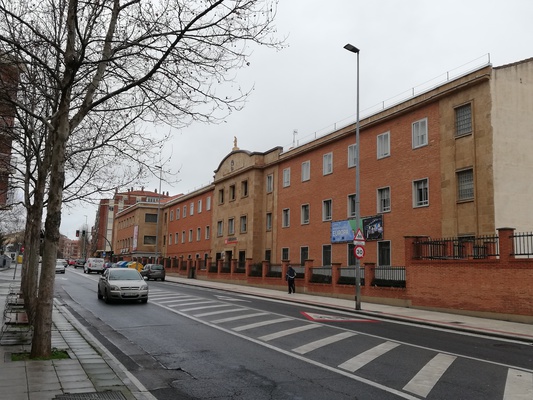
HOSPITATIONS
Day 1
After the introductory reception, we talked with the principal and his assistant. While presenting Slovenia, our school system and our own school, we also got to know the Spanish school system and the organization of lessons and work at the Salesian school.
We took a guided tour to kindergarten, elementary schools, secondary schools, and also all levels of vocational training - basic, medium and high.
Colegio Salesiano San Jose de Salamanca is recognized in the broad local environment for a stimulating learning environment for students with disabilities. Aid and special treatment is given to ¼ students.
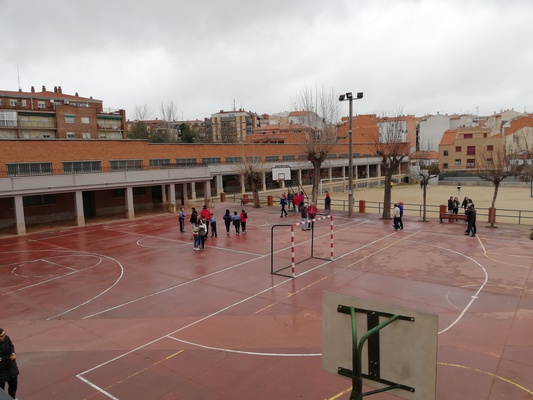
Day 2
We observed the work in 5th and 6th grade in Mathematics, English and Native language lessons.
Students with special needs had the help of an additional qualified teacher in the classroom. One teacher provides assistance to multiple students in the same class, regardless of the type of shortfall (learning difficulties).
The lessons are mostly interactive. Each student has their own tablet, which they use in school and at home to solve tasks and consolidate learning material. The teacher writes the explanation of the new teaching topic to the board and the students to notebooks.
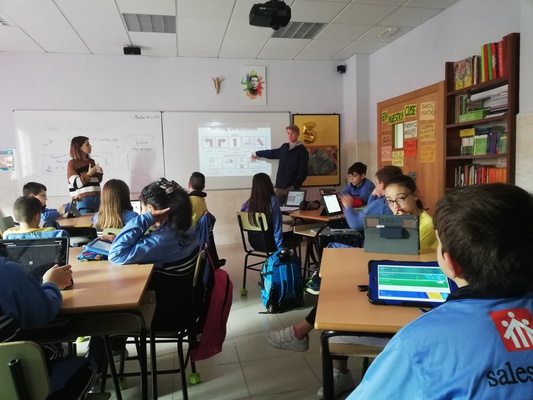
Day 3
We followed the project day of the final year of secondary school named: “We are the architects.” The students measured the data with the help of measuring devices to draw up a plan and a matrix for the 3D model of the facade of the building on Plaza Mayor main square, using trigonometric regularities in a right triangle.
The school project is also an interest to the cultural world the Salamanca (Council of Culture in Salamanca), so the local media also took part in the project day.
Students with disabilities joined groups where they were led by more skilled classmates.
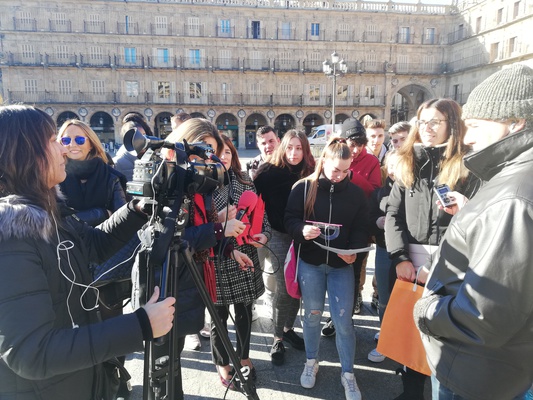
Day 4
Foreign language and Maths classes in 1st and 2nd grade, are taught without an additional teacher, although several students with special needs (autism, ADHD, reduced abilities, etc.) are included in each class.
The morning greeting in the circle with the 2nd grade students continued into the class lessons. The Maths was conducted in Spanish and English simultaneously.
The first grade Maths took the form of workshops. The students switched stations with different Maths tasks (calculus, number editing, geo-board characters, hundredth square, card game, tablet tutorials).
After class, the school conducted a humanitarian event with parents to raise funds for the project: "Saving the Water - Philippines."
In the afternoon, the principal and his assistant were invited to a formal reception at the City Hall. At the reception, we were awarded with the title of Ambassador of the City of Salamanca under official protocol.
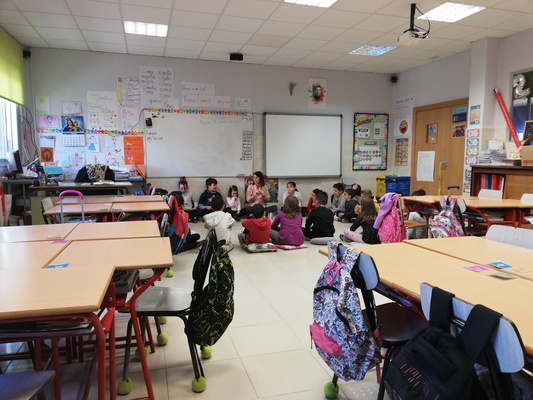
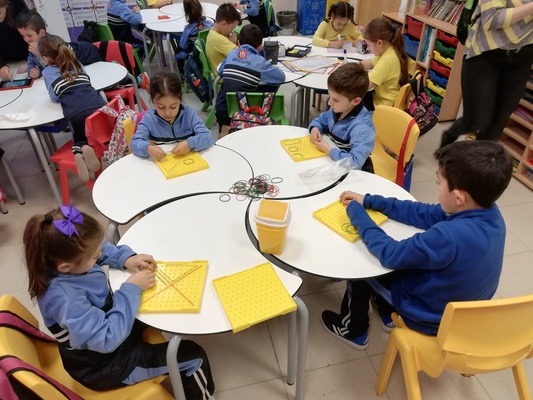
Day 5
The morning greeting in the chapel was followed by mathematics in 1st grade secondary school (our 7th grade). The teacher guided the lessons according to the guidelines of formative monitoring. A teacher for additional professional assistance also took an active part in the work, as 8 students with special needs are included in the department. They were offered an additional explanation, if it was necessary.
Class work is organized in groups of 4, each group includes one or two students with different disabilities and deficits.
The explanation was not frontal to the board, but the students played it via video on the Tablet PC. They could listen to it several times (even at home) when needed. Video explanations were also provided with the difficulty level exercises, which were handled in a notebook.
This was followed by a concluding session with the assistant, exchange of gifts of gratitude and goodbye.
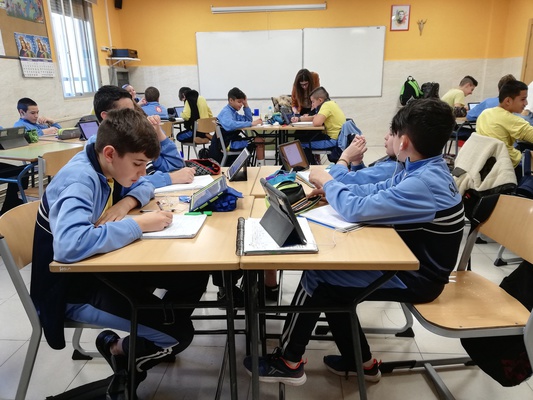
NATURAL AND CULTURAL HERITAGE
Each day in the afternoon, we saw (also accompained by Salesian school teachers) the foolowing attractions: Plaza Mayor, University of Salamanca, Catedral Vieja and Catedral Nueva, Parque de la Alamedilla, Mercado Central, Art Nouveau decor at Museo Art Nouveau & Art Deco, Casa de las Conchas, Museum of Salamanca, Convert of St. Ieronimus Stephen, las Duenas Convert, Iglesia de San Martin de Tours, Convento de las Úrsulas, Casa de la Muertes, Jesuitas Park, Huerto de Calixto y Melibea, -Cueva de Salamanca, Puente Romano, La Alberca.
